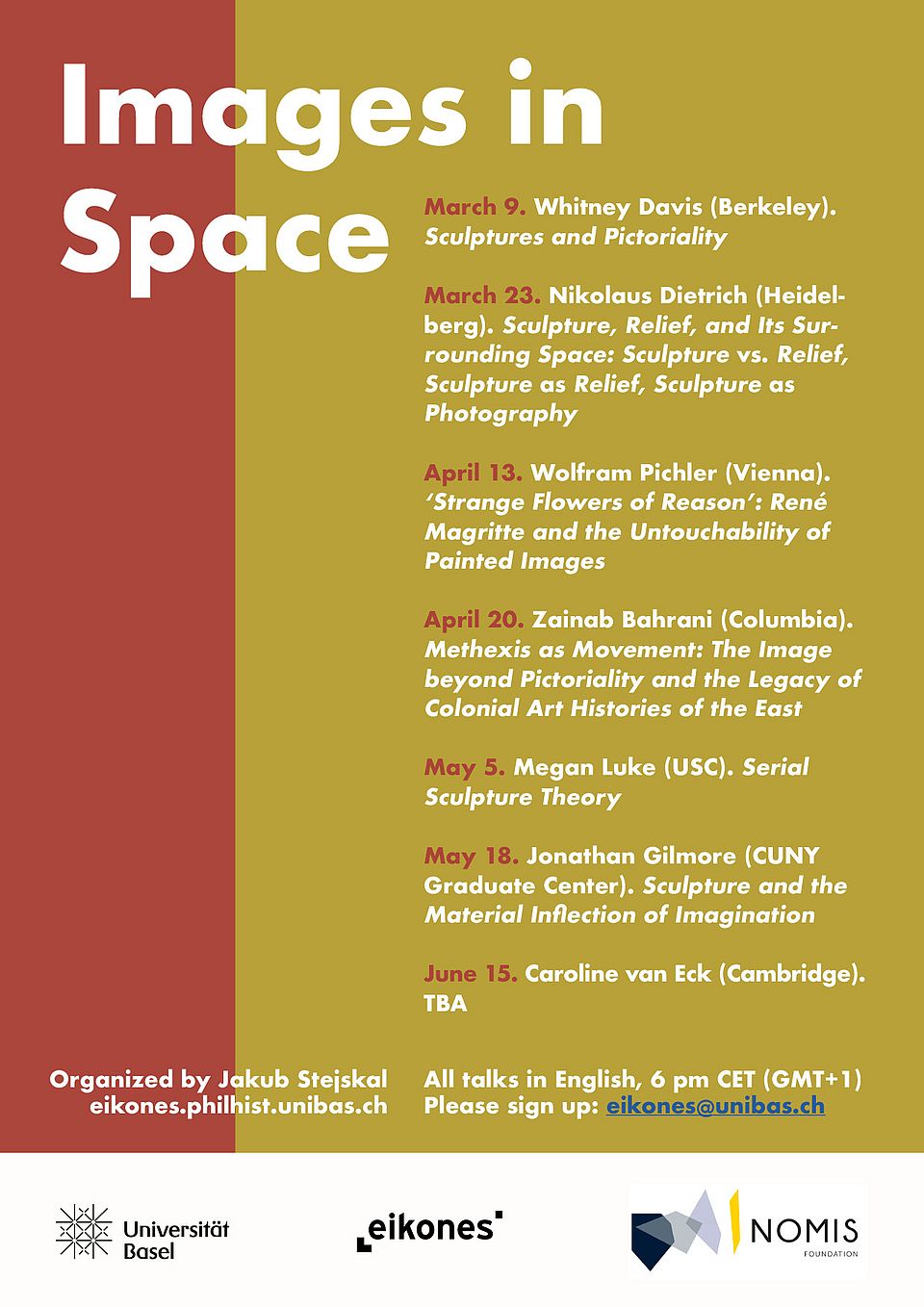eikones, via Zoom. Please sign up for Zoom link: eikones@unibas.ch
Organizer:
Jakub Stejskal, Nomis-Fellow
Images in Space (with Whitney Davis, Berkeley)

Modern Western reflections on the nature of images have predominantly focused on pictures, that is, images on flat surfaces, as paradigmatic examples of depiction. Discussions of images with three-dimensional supports have thus often been derivative or completely sidestepped. The aim of this series of talks is to shift focus to three-dimensional images ‘in the round’ like sculptures, figurines, or models, and to investigate the specifics, whatever they may be, that issue from their 3D nature. Of interest will be anthropological, historical, as well as philosophical approaches. Some of the relevant questions include: In what aspects has a production/reception/circulation of spatial images differed from pictures? Is thereanything specific about 3D image vehicles that a depiction theory should reflect? How have various histories and anthropologies of images succeeded or failed to recognize the difference?
Abstract: Sculptures and Pictoriality (from Whitney Davis)
One of the most striking and extreme claims in contemporary analytic philosophy of art (analytic aesthetics) is that figurative sculptures in the round differ categorically from figurative paintings on flat surfaces in lacking an internal “depiction point,” a “perspective in” the sculpture-as-representation, such as we find in a painted perspectival projection, as distinct from a “perspective on” the sculpture-as-artifact (R. Hopkins). In this well-defined sense figurative sculptures-in-the-round are not pictorial. It is true that many accounts of pictures, such as Wollheim’s influential account of “two-foldness” and “seeing-in,” elaborated by Dominic Lopes and others, don’t fully deal with sculptures and/or don’t seem to accommodate sculptural representation. But it seems false to the phenomenology of sculpture to deny pictoriality to three-dimensional shapes representing or referring to what the shapes resemble (as well as “figuring” or otherwise metaphorically denoting them); it certainly leaves the status of specifically sculptural “representation” up in the air. The paper explores this matter analytically and anthropologically, looking especially at directions of thought and practice that would break down the abstract dichotomy between pictures and sculptures. Setting aside the special issue of three-dimensional “tactile pictures” sensed and made exclusively by touch by blind people (J. Kennedy), many intermediate formats must be considered that don’t fit the framework—perspective projections on convex surfaces, “reverspectives” (P. Hughes), low relief sculptures (A. Hildebrand), etc. In particular, the semantically relevant many-sidedness of traditional sculpture-in-the round, stressed by J. Herder, E. Löwy, and others, opens up quotients of sculptural pictoriality in virtue of the unequal configurational weight and coherence of the different views in the synthetic image. In general, “pictures” (which are never purely two-dimensional) shouldn’t be categorically contrasted with “three-dimensional” configurations: in imaging (natural visual perspective), many kinds of configurations (which are always three-dimensional) accrue pictoriality at certain standpoints. Relevant examples are drawn from paleolithic Europe, ancient Egypt, Classical Greece, and modern experimental arts.
Export event as
iCal
